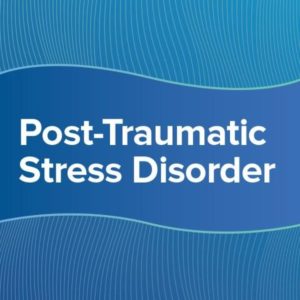PTSD, Post Traumatic Stress Disorder, is a condition commonly improved by IASIS Microcurrent Neurofeedback and/or EMDR. A combination of EMDR with IASIS as an add-on commonly promotes improvements in symptoms of PTSD. Moreover, a plan that includes both EMDR and IASIS will promote desensitation and reprocessing, enhancing the brain’s engagement in alleviating the symptoms of trauma and acute stress. Give us a call to discuss your specific needs.
What is post-traumatic stress disorder or PTSD?
Some people develop post-traumatic stress disorder (PTSD) after experiencing a shocking, scary, or dangerous event. It is natural to feel afraid during and after a traumatic situation. Fear is a part of the body’s normal “fight-or-flight” response, which helps us avoid or respond to potential danger. People may experience a range of reactions after trauma, and most will recover from their symptoms over time. Those who continue to experience symptoms may be diagnosed with PTSD.
Who develops PTSD?
Anyone can develop PTSD at any age. This includes combat veterans as well as people who have experienced or witnessed a physical or sexual assault, abuse, an accident, a disaster, a terror attack, or other serious events. People who have PTSD may feel stressed or frightened, even when they are no longer in danger. Not everyone with PTSD has been through a dangerous event. In some cases, learning that a relative or close friend experienced trauma can cause PTSD. According to the National Center for PTSD, a program of the U.S. Department of Veterans Affairs, about seven or eight of every 100 people will experience PTSD in their lifetime. Women are more likely than men to develop PTSD. Certain aspects of the traumatic event and some biological factors (such as genes) may make some people more likely to develop PTSD.
What are the symptoms of PTSD?
Symptoms of PTSD usually begin within 3 months of the traumatic incident, but they sometimes emerge later. To meet the criteria for PTSD, symptoms must last longer than 1 month, and they must be severe enough to interfere with aspects of daily life, such as relationships or work. The symptoms also must be unrelated to medication, substance use, or other illness. The course of the illness varies: Although some people recover within 6 months, others have symptoms that last for a year or longer. People with PTSD often have co-occurring conditions, such as depression, substance use, or one or more anxiety disorders.
After a dangerous event, it is natural to have some symptoms or even to feel detached from the experience, as though you are observing things rather than experiencing them. A health care provider—such as a psychiatrist, psychologist, or clinical social worker—who has experience helping people with mental illnesses can determine whether symptoms meet the criteria for PTSD.
To be diagnosed with PTSD, an adult must have all of the following for at least 1 month:
- At least one re-experiencing symptom
- At least one avoidance symptom
- At least two arousal and reactivity symptoms
- At least two cognition and mood symptoms
Re-experiencing symptoms
- Flashbacks—reliving the traumatic event, including physical symptoms such as a racing heart or sweating
- Reoccurring memories or dreams related to the event
- Distressing thoughts
- Physical signs of stress
Thoughts and feelings can trigger these symptoms, as can words, objects, or situations that are reminders of the event.
Avoidance symptoms
- Staying away from places, events, or objects that are reminders of the experience
- Avoiding thoughts or feelings related to the traumatic event
Avoidance symptoms may cause people to change their routines. For example, after a serious car accident, a person may avoid driving or riding in a car.
Arousal and reactivity symptoms
- Being easily startle
- Feeling tense, on guard, or “on edge”
- Having difficulty concentrating
- Having difficulty falling asleep or staying asleep
- Feeling irritable and having angry or aggressive outbursts
- Engaging in risky, reckless, or destructive behavior
Arousal symptoms are often present—they can lead to feelings of stress and anger and may interfere with parts of daily life, such as sleeping, eating, or concentrating.
Cognition and mood symptoms
- Trouble remembering key features of the traumatic event
- Negative thoughts about oneself or the world
- Distorted thoughts about the event that cause feelings of blame
- Ongoing negative emotions, such as fear, anger, guilt, or shame
- Loss of interest in previous activities
- Feelings of social isolation
- Difficulty feeling positive emotions, such as happiness or satisfaction
Cognition and mood symptoms can begin or worsen after the traumatic event and can lead a person to feel detached from friends or family members.
Source: Source: National Institute of Mental Health (2021). Post-Traumatic Stress Disorders. Retrieved December 28, 2022, from https://infocenter.nimh.nih.gov/publications/post-traumatic-stress-disorder

